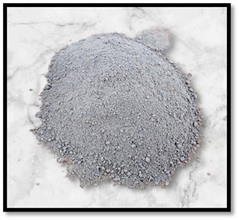Effect of Steel Fibers and Iron Filings on Concrete Properties with Partial Replacement of Cement by Fly Ash
DOI:
https://doi.org/10.51173/jt.v7i1.2638Keywords:
Fly Ash, Hardened Concrete, Fresh Concrete, Steel Fiber, Iron Filings, Crack Resistance, Mix DesignAbstract
Concrete is one of the most used construction materials., Mineral admixtures with pozzolanic characteristics, like silica fume, fly ash, ground granulated blast-furnace slag, and metakaolin, are often used to replace Portland cement in construction projects partially. Concrete faces persistent challenges, such as low tensile strength, brittleness, and a propensity to crack. This comprehensive study explores the improvement of partial substitution of Portland cement concrete properties with fly ash and reinforced with steel fibers and iron filings. In total, 45 cubes (150 mm) and prisms (100x100x500 mm) were tested using an M25 mix, varying the steel fiber volume fractions at 0%, 0.5%, and 1.0%. These specimens were subjected to given curing periods, after which compressive and split tensile strength tests were conducted to assess their performance. For comparison, plain concrete specimens of the same mix were also tested. Also, iron filings were incorporated into the concrete mix at three different percentages (0%, 0.5%, and 1%) to assess their influence on compressive and tensile strengths after 28 days. The results demonstrate that the addition of steel fibers significantly enhances the mechanical properties of concrete. After 28 days, compressive strength increased by 8.5% to 24%, tensile strength improved by 15% to 49.43%, and flexural strength increased by 38.5% to 85%. Similarly, the inclusion of iron filings improved compressive strength by 9.78% initially, followed by a decrease of 13.84% at higher content. Tensile strength increased by 24.05% to 34.43%, while flexural strength improved by 21% to 29.7%. However, both steel fibers and iron filings slightly reduced workability, with slump values ranging from 63 mm to 92 mm depending on the material and its proportion. The outcomes provide a comparative analysis of the effect of steel fibers and iron filings on the mechanical characteristics of concrete, and present valuable understandings for optimizing concrete behavior in construction applications.
Downloads
References
L. Das and Md. Kumruzzaman, "Strengthening concrete; unbridling the potential of steel fiber reinforcement," 7th International Conference on Mechanical Engineering and Renewable Energy, Chattogram, Bangladesh, Nov. 2023.
ACI Committee 544, "State-of-the-Art Report on Fiber Reinforced Concrete," ACI 544.1 R-96, American Concrete Institute, 1996.
V. S. Vairagade and K. S. Kene, "Introduction to steel fiber reinforced concrete on engineering performance of concrete," Int. J. Sci. Technol. Res., vol. 1, no. 4, pp. 139-141, 2012.
A. Lyons, Materials for Architects & Builders, United Kingdom: Butterworth-Heinemann Publishers, 2004.
A. M. Neville, Properties of Concrete, 5th ed., 2011.
M. N. AL-Hashimi and W. S. Najim, "Performance of concrete containing iron fillings," J. Univ. of Babylon for Eng. Sci., vol. 26, no. 6, 2018.
S. C. K. Bendapudi and P. Saha, "Contribution of fly ash to mortar and concrete properties," Int. J. Earth Sci. Eng., vol. 4, pp. 1017-1023, 2011.
H. M. Al-Baghdadi, F. H. Al-Merib, A. A. Ibrahim, R. F. Hassan, and H. H. Hussein, "Effects of coarse aggregate maximum size on synthetic/steel fiber reinforced concrete performance with different fiber parameters," Buildings, vol. 11, no. 1, p. 158, 2021.
D. Ramob D., A. S. Silva, F. D. A. Silva, and R. D. T. Fillho, "Flexural behavior of hybrid steel fiber reinforced self-consolidating concrete," vol. 67, 2014.
W. Yao, J. Li, and K. Wu, "Mechanical properties of hybrid fiber-reinforced concrete at low fiber volume fraction," Cement and Concrete Research, vol. 33, pp. 27-30, 2003.
S. K. Lim, W. Y. Wong, M. K. Yew, and H. Y. Chong, "Strength properties of lightweight foamed concrete with steel fibre," J. Inst. Eng. Malaysia, 2024.
F. A. Olutoge, M. A. Onugba, and A. Ocholi, "Strength properties of concrete produced with iron filings as sand replacement," Br. J. Appl. Sci. Technol., vol. 18, no. 3, 2016.
A. N. Alzaed, "Effect of iron filings in concrete compression and tensile strength," Int. J. Recent Develop. Eng. Technol., vol. 3, pp. 1-6, 2014.
[14] R. Case, J. Duan, and T. G. Suntharavadivel, "On effects of fly ash as a partial replacement of cement on concrete strength," Appl. Mech. Mater. J., 2012.
Central Agency for Standardization and Quality Control, Portland Cement, IQS No.5/2019, Planning Council, Baghdad, Iraq, 2019.
Central Agency for Standardization and Quality Control, Aggregate from Natural Sources for Concrete, Iraqi Specification No. 45/1984, Planning Council, Baghdad, Iraq, 1984.
E. S. Berney IV and D. M. Smith, "Mechanical and physical properties of ASTM C33 sand," Geotechnical and Structures Laboratory, U.S. Army Engineer Research and Development Center, 2003.
British Standard, Methods for determination of density of hardened concrete, BS 1881-114:1983, 1983.

Downloads
Published
How to Cite
Issue
Section
License
Copyright (c) 2025 Zainab A. Mohammed, Assel Qaddoori Makhool, Yasir W. Abdujaleel, Ishraq Hameed Naser, Gummadi Chiranjeevi

This work is licensed under a Creative Commons Attribution 4.0 International License.
















